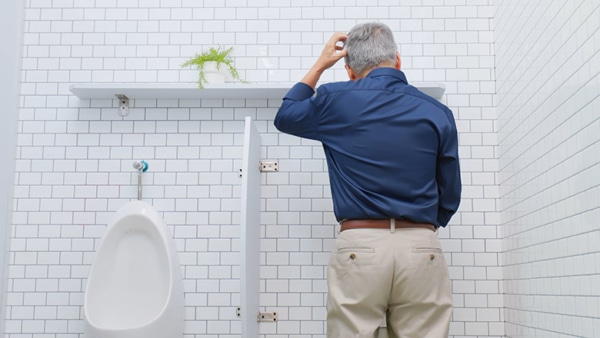Help! My overactive bladder medication is not working anymore.

Medication is not the last line of defense when it comes to treating the symptoms of overactive bladder or OAB. Too many patients suffer in silence for far too long after trying lifestyle changes or medications that fail to resolve their symptoms. We know; we see it every day at our practice.
The Frustration of Living with OAB
We understand the frustration and challenges that come with living with an overactive bladder. You are not alone in this journey.
OAB is a chronic medical condition that significantly affects quality of life. OAB causes frequent urination or an urgent need to urinate. The urge can be so hard to control that it can result in embarrassing accidents. Patients are afraid to travel, scared to go to social gatherings, and even anxious to leave their homes because they are in and out of the bathroom so often or, worse, concerned there might not be a bathroom nearby when they have an attack.
Why Do I Have OAB
An overactive bladder occurs when the bladder muscles spasm, causing you to urinate even when the bladder isn’t full. The bladder muscles are spasming because something is malfunctioning with your detrusor muscle, which is the muscle in your bladder that contracts and pushes urine out.
Your detrusor muscle can be damaged or weakened by many things, including:
- Bladder inflammation, stones, or cancer
- Diabetes
- Obesity
- Pregnancy and childbirth
- Radiation therapy
- Enlarged prostate called Benign Prostatic Hyperplasia (BPH)
- Estrogen deficiency after menopause
- Herniated disc, spinal cord injury, back surgery
- Pelvic surgery
- Pelvic prolapse
- Neurological disorders (i.e., Stroke, multiple sclerosis, Parkinson’s disease)
What to Do When Your OAB Medications No Longer Work
OAB medications are prescribed to decrease the frequency and intensity of bladder contractions and to relax the smooth muscles of the bladder. You may need to try multiple medications before finding the one that works best for you. We want all patients to have tried at least two types of medications before we move on to other treatment options. Medications can take 4-6 weeks to reach their maximum effect.
However, medications don’t work for everyone, or the side effects may not be tolerated. In that case, patients can try other highly effective treatment options.
- Botox Injections—Botox temporarily blocks the signals between the nerves and the bladder muscle. It helps the muscles relax, giving you more time to go to the bathroom.
- Sacral Nerve Stimulation—A tiny device, like a pacemaker, is implanted into a patient’s lower back to deliver mild electrical pulses that help the nerves function.
- Percutaneous Tibial Nerve Stimulation (PTNS)—This option involves inserting a thin needle electrode into the tibial nerve near the ankle to help nerves function normally. PTNS is given weekly for 12 weeks.
Treating OAB is a Step-by-Step Journey
If one treatment doesn’t work, please don’t give up. Treating an overactive bladder is a step-by-step journey, but there is hope. You can find relief from your symptoms.
To learn more about the causes, symptoms, and treatment options for OAB, download our OAB guidebook or request an appointment with one of our urologists. Don’t let OAB control your life. Take the first step towards relief today.

